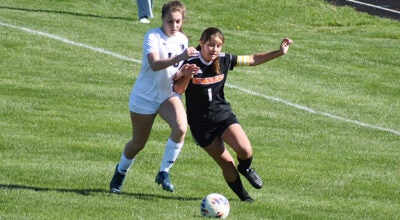Final Four floors made in Michigan
Published 5:00 am Saturday, March 27, 2010
AMASA – When the men’s and women’s National Collegiate Athletic Association basketball Final Four begin next week, millions of Americans will be watching the athletes play on courts that started taking shape last September in a tiny town on Michigan’s Upper Peninsula.
The town of Amasa, population 250, is home to a complex of four buildings housing one of the manufacturing operations of Connor Sport Court International. Connor, founded in 1872, is the leading manufacturer of hardwood courts in the U.S.
Summer brings a tourist economy to the U.P., but the Connor plant is the largest full-time employer in Iron County.
“We draw 70 percent of our 125 employees from the towns of Iron River and Crystal Falls,” says Conrad Stromberg, manager of the plant and a Connor employee for the past 23 years.
Stromberg lives in Amasa. ” We have to go to Crystal Falls or Iron River to do our shopping.”
In addition to the NCAA Final Four courts, Connor’s Amasa plant also manufactures about 750 playing courts every year for schools, gymnasiums, colleges and even NBA teams.
“We are very proud of the portable courts we build for the NCAA and the NBA teams,” said Stromberg, citing as an example the unique parquet hardwood portable floor the company built for the Boston Celtics.
“Portable floors, such as those used in the Final Four, enable venues to quickly take them up and down. This means you can have basketball one night, hockey the next,” says Stromberg.
The NCAA Final Four courts for both men and women are manufactured from hard maple which Connor purchased as rough lumber from Timber Products Company, located about 140 miles north of Amasa near Munising. Connor buys from about 60 different sawmills, most of them in Michigan and Wisconsin.
Last September the rough lumber arrived at the Connor plant.
“First it is cut to a width size of 2 and 1/4 inches,” said David G. Smith, production manager at Amasa. It is then planed and defects are cut out of the wood. After that, it runs through a side-matcher, which planes it down and cuts the tongue and groove on each side of the strip. It then goes to the end-matcher which makes a tongue and groove on the end of each strip. It is graded first, second and third according to Maple Floor Manufacturing Association (MFMA)
“The NCAA gets only first grade maple,” says Smith.
The courts then go into a separate building where it is “portablized,” assembled into sections measuring 48 1/4 inches by 96 and 1/8 inches.
One of the most critical elements is the subflooring, a patented Connor structure which goes under the maple surface and provides just the right amount of resiliency and shock absorption to assure good performance and player safety.
Once each portable section is complete, it is placed in a stack of 12 under stringently controlled temperature and humidity conditions.
A few weeks before the Final Four tournaments, the floor is assembled and inspected at the Amasa plant.
The floor is then disassembled and sent to one of the company’s finishing facilities, in this case J.T. Flooring in Milwaukee for the men’s‚ Final Four Court and Mid-Ohio Flooring in Apple Creek, Ohio for the women’s floor.
The 2010 Men’s Final Four will be played April 3-5 in the Lucas Oil Stadium in Indianapolis. The 2010 Women’s Final Four will be April 4-6 at the Alamodome in San Antonio.
The finishers lay out the floor and then carefully sand the surface… Two coats of seal follow. Seal keeps the finish and paint from being absorbed. Then the logos and other decorative elements are painted on the court.
Finally, one coat of gloss provides that familiar shine that says “Final Four basketball.” From the finishers it is shipped to the playing sites.





